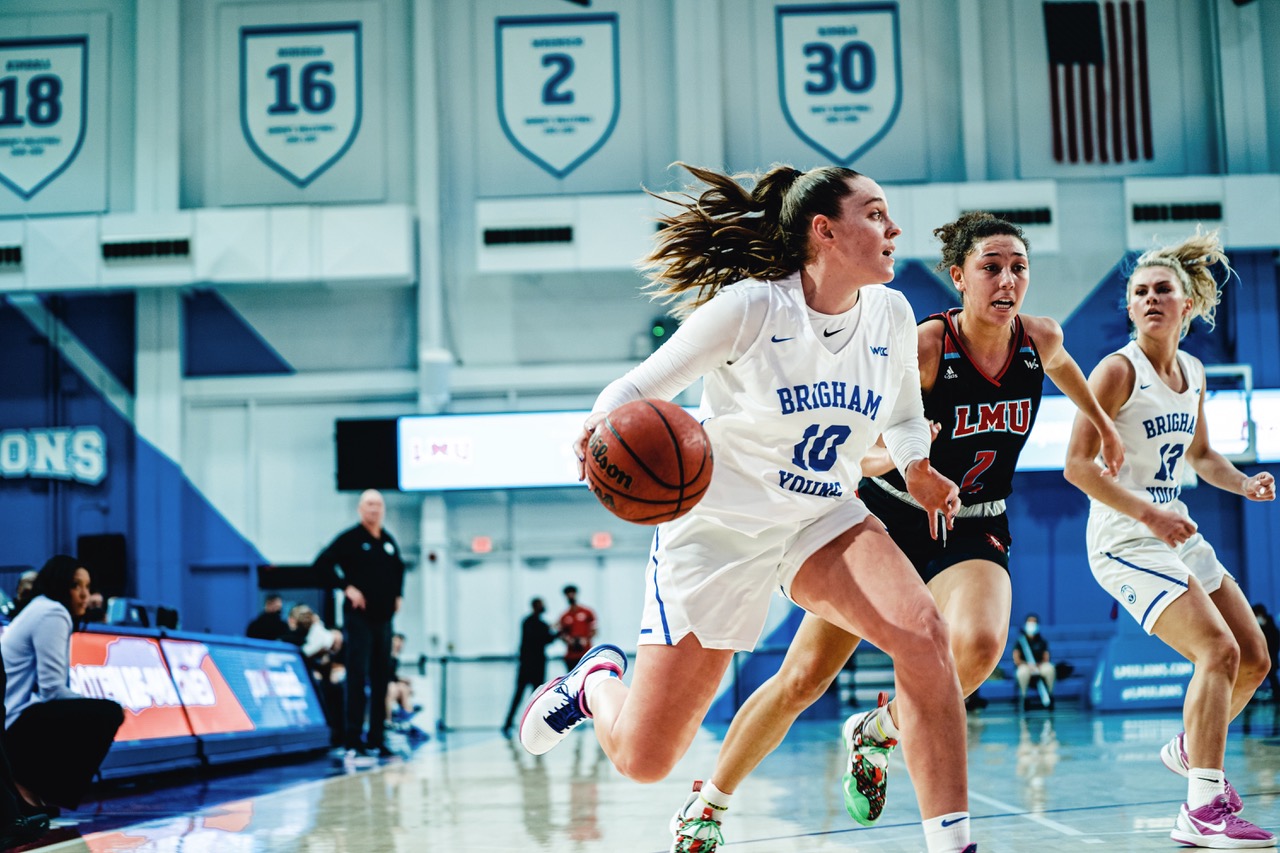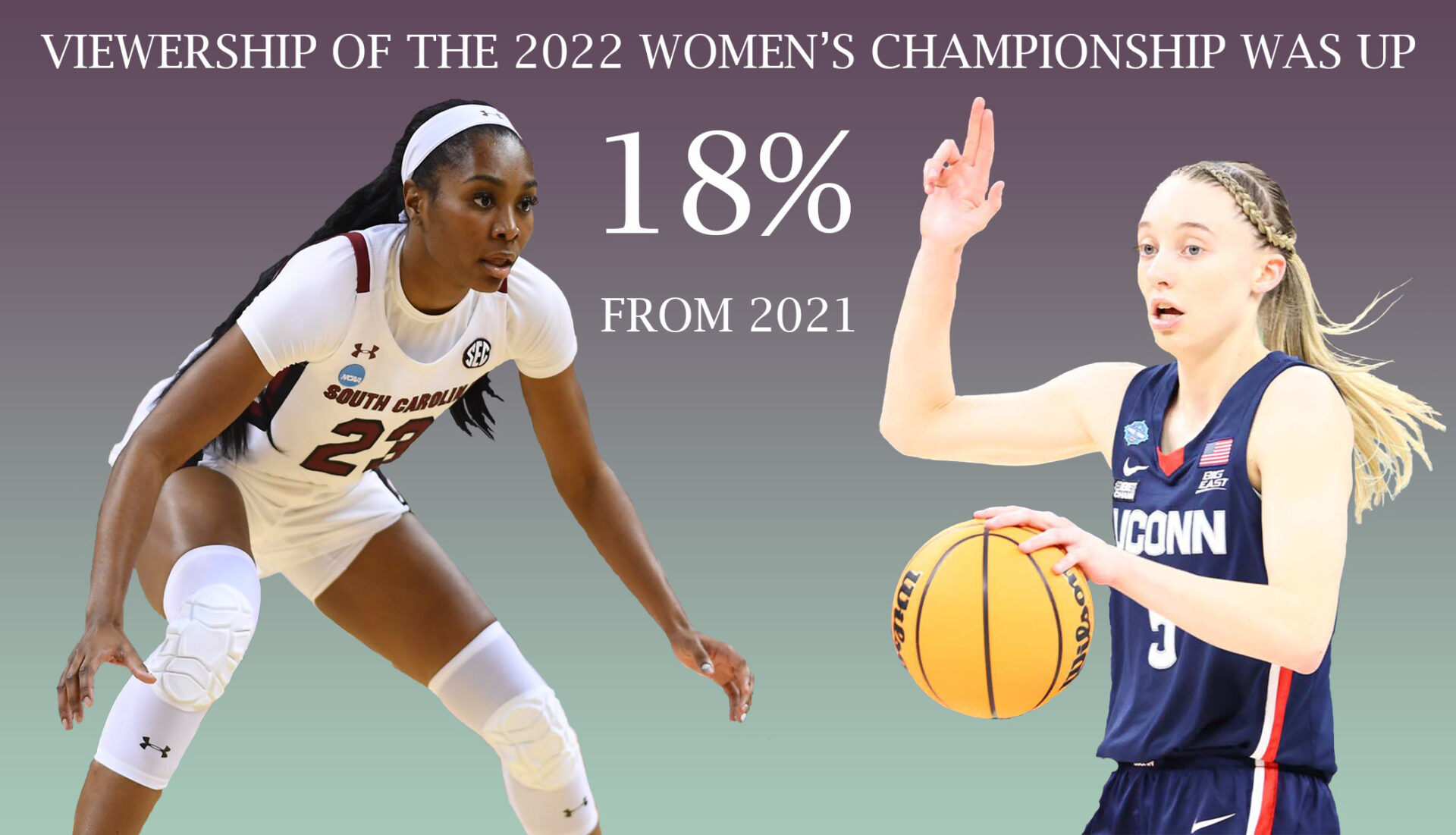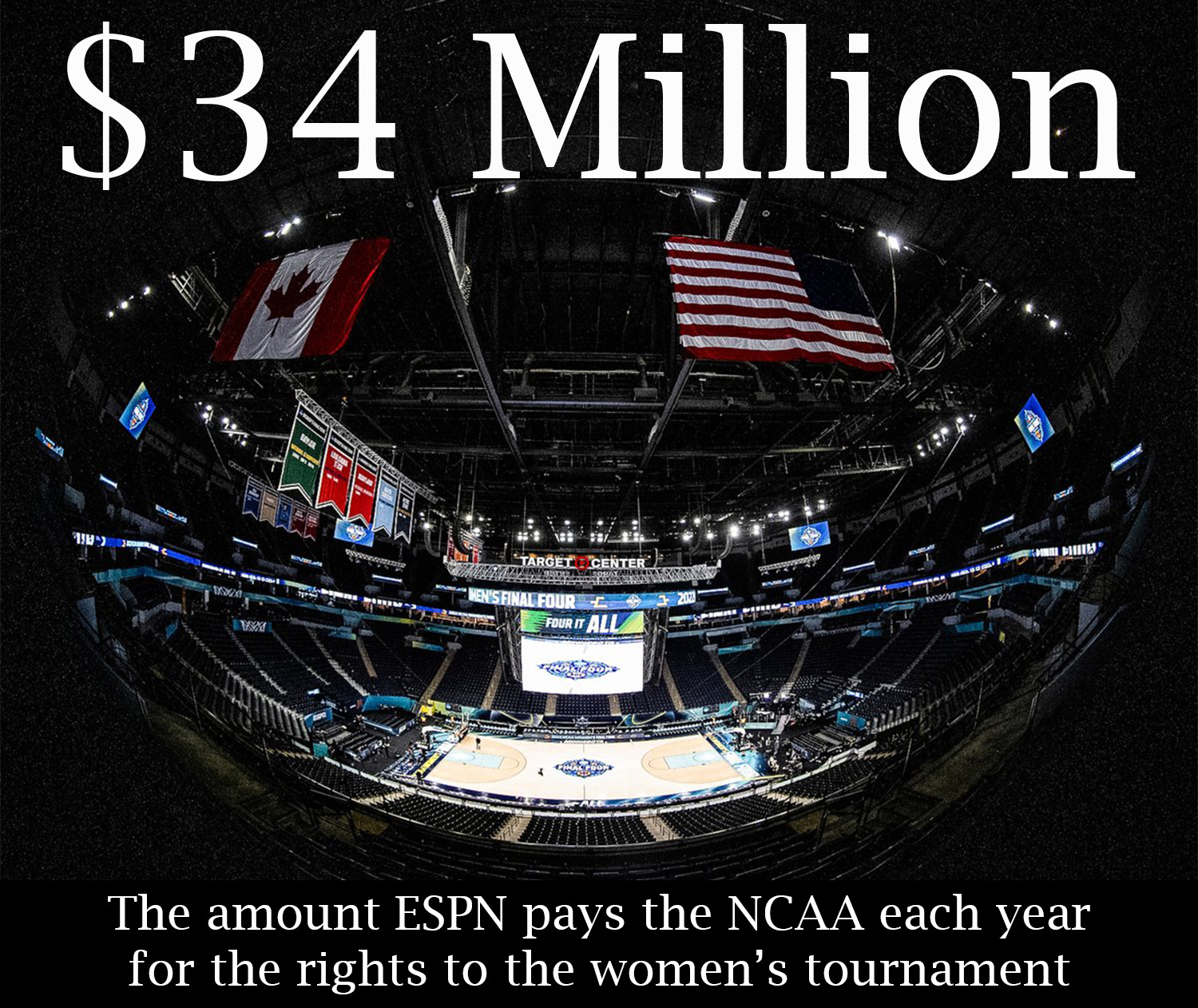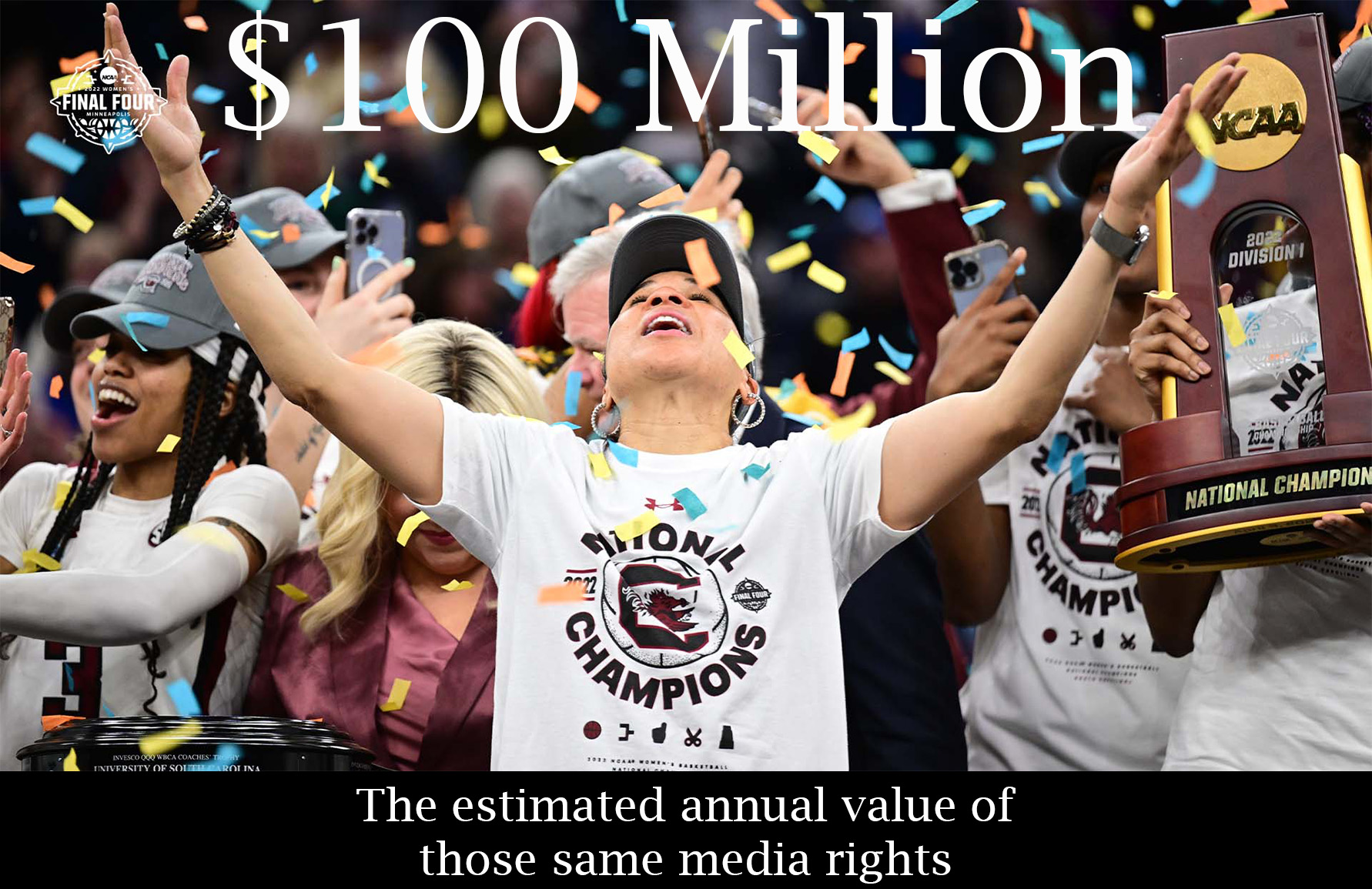Last year during the NCAA women’s basketball tournament, Oregon forward Sedona Prince set the internet on fire with a TikTok she sharing on his social media accounts. While the men’s and women’s tournaments were held in single-location “bubbles” due to the COVID-19 pandemic, Prince was quick to point out how the men’s teams were treated better, whether in the weight rooms, meal, gamer gifts and more.
While the NCAA quickly tried to save face by calling on a new weight room for women, the damage was already done. Profound structural differences were revealed, and in the face of growing public pressure, the NCAA authorized the release of an external report on gender equity in college sports.
A year after the 2021 tournaments – and with the end of the 2022 tournaments – athletes and fans can see what, if anything, has changed. They can also continue to look to the future and see if the time of more lasting gender equity is on the horizon.
The report
The law firm Kaplan Hecker & Fink (KHF) provided results which details recommendations the NCAA should use in the 2022 tournaments and moving forward to ensure a permanent gender equity structure. Gender Equity in the NCAA page lists recommendations implemented in 2022, as well as others they plan to implement in the future.
Notably, several of the report’s recommendations focused on accountability and permanent change were absent from the NCAA’s plans, including conducting an annual gender equity audit and conducting another external evaluation in five years .
“Yes, the NCAA plans to undergo regular audits related to gender equity efforts,” Meghan Durham, NCAA associate director of communications, told the Daily Universe. “I don’t have an update for you on a specific timeline at this point.”
Changes to the 2022 women’s tournament

BYU women’s basketball guard Tegan Graham was in attendance at both the 2021 and 2022 tournaments, giving her a front-row seat to compare the two. She appreciates the progress that has been made, such as expanding the women’s bracket to 68 teams and using the March Madness brand in the women’s tournament for the first time.
“Something as simple as using the March Madness brand for the women’s event, just like the men’s event, is incredibly powerful,” said Danielle Donehew, executive director of the Women’s Basketball Coaches Association. “It sends a message to our student-athletes, to our coaches, to our individuals across campuses, and to all the fans and people across our country, across our ecosystem, that this is a unified effort to promote and support these two incredible events.”
However, Graham was unhappy and frustrated with other changes made by the NCAA that seemed to be sent with a message.
“(The equipment bags were) kind of disappointing, because – and I think this is very helpful – they made the men’s and women’s equipment bags the same, but the quality just wasn’t good,” he said. Graham said. “A woman’s gift bag last year was better than the one she got this year. I think the NCAA did this on purpose to further this narrative that “well, if you want to give more to women, then we need to give less to men,” and that’s just not the case.
Graham recently completed her master’s degree, where she explored gender equality in college sports for her thesis aimed at debunking the idea that if women receive more, men must receive less.
What to watch for: media coverage
As the sports director of news outlet KREM2, Brenna Greene covers men’s and women’s college basketball. She also called attention to disparities in 2021 when she showed how the NCAA provided footage of men’s games — but not women’s games — up until the Sweet Sixteen. Greene said last year was the first time the NCAA provided this resource, as many media outlets were not sending photographers to games due to the COVID-19 pandemic.
While the NCAA hinted it would provide photos for both tournaments this year, Greene found no photos throughout the tournaments. She explained that due to NCAA rules, media outlets cannot republish content from broadcasts or team photographers, so not having photos available limits coverage. Even though KREM2 had a photographer at every game this year, they were unable to add visuals to their recaps of their local team’s women’s games last year.
Although problems with media coverage have persisted, Greene says it’s not for lack of trying. She and her colleagues do everything they can to cover both genders equitably. Trends over the past year are encouraging, however, as the recent women’s championship game between South Carolina and UConn was the most watched women’s championship game since 2004. “I think it’s just an example of how if you invest in something, you can make a profit from it,” Greene said.

What to watch: media rights agreement
One of the topics Graham covered in his dissertation was NCAA payments to tournament teams. The men’s tournament is structured so that schools receive money for themselves and their athletic conferences based on the number of games they play. The women’s tournament does not provide for such payments. That means athletic departments have less incentive to invest in women’s athletics because the money isn’t as easily repaid.
The upcoming media rights deal signed by the NCAA for the women’s tournament (the current deal expires in 2024) could potentially resolve the issue. Donehew explained that if the NCAA receives a higher contract for the women’s tournament, its increased profit could be used to set up a structure for a revenue stream.
Many believe the current deal undervalues women’s basketball. Lindsay Wyson is a Built4Life intern at BYU, where she assists the athletic department with name, image and likeness (NIL) agreements. She pointed to a report from Boardroom that shows four of the five athletes with the highest NIL earning potential on social media between the men’s and women’s Final Fours were women.
“It just proves that women’s sports have value,” Wyson said. “These numbers make you think: why are these female athletes worth so much on social media? She thinks the numbers show women’s basketball is worth far more than the current TV deal.
Donehew and the WBCA are also closely monitoring the upcoming media rights deal.
“The WBCA strongly recommends that we pay close attention and assist in any way we can in negotiating this important media deal. It will be really important, as this deal is renegotiated, that the women’s tournament is valued at market value going forward,” she said.
However, Donehew explained that a new agreement is meaningless without a revenue system to flow from it.
“We expect that when this deal is managed very well, more money will come into the NCAA through this deal,” she continued. “When that happens, it will be the appropriate time to begin a distribution of units for the success of women’s basketball in the tournament.”


Although a potential solution has been identified to hopefully correct much of the income disparity in college basketball, Greene explains that the upcoming media negotiations are not as simple as the NCAA’s asking price . Although she has no affiliation with the NCAA, ESPN or the latest round of negotiations, she understands the basic principles behind media deals.
“They really just need a strong competitor to ESPN because you see the NFL and the deals they make. The reason they get these huge contracts is because everyone wants these rights, so they push each other. That’s where they get all this money,” Greene said.
What to watch for: permanent change
Although the NCAA did not respond to Daily Universe’s request to verify this information, an NCAA tournament source said meetings were planned to evaluate gender equity in real time. These meetings would be an important first step towards long-term accountability and gender equity.
Moving forward, athletes, coaches and fans say they’re watching closely to see if the recent changes are a sign of lasting improvements or if the NCAA is simply trying to appease the crowd to save face before falling back into his old habits. Ultimately, everyone involved believes the NCAA can only be held accountable if it remains under scrutiny.
“I want to say that I’m hopeful because I feel like this conversation about gender equity has been a hot topic for about over a year now,” Graham said of his hopes for permanent change. “The last decade has slowly (there been more coverage of women’s athletics), but I think in the last two years, maybe even three years, there’s been a much bigger push . And then, after the 2021 tournaments, there was a massive influx of people because of the public outcry. So I want to say that I am optimistic because of public pressure.


